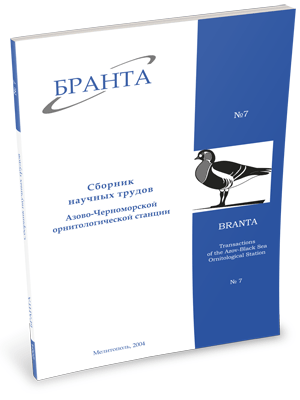
Transactions
of the Azov-Black Sea Ornithological Station



Black Stork (Ciconia nigra) in the Crimea
Kostin S.Yu.
The Black Stork (Ciconia nigra) is known as a breeding and passage bird of the Crimea, always rarely observed.
Analysis of the present state of the species in the region is of especial actuality in connection with a forthcoming edition of the Ukrainian Red Data Book. The publication is based on literary data, communications and personal observations.
Spring migration of the Black Stork in the region lasts from March to late May and is less expressed (1-8 ind.) unlikely to autumn passage (August-October) with 3-49 ind. Analysis of the data over other regions of South Ukraine and the Crimea shows that in the near Azov area during autumn passage single individuals are met while further to the west numbers of birds in flocks increase and reach maximum (from dozens to one hundred individuals) in the lower Dniester and then at Bulgarian Black Sea coast.
The south of Ukraine is crossed by migratory routes of storks, breeding in the northwestern Europe and further to the east in the basin of Don and Volga (Lebedeva, 1979). A borderline location of the Crimea between two migratory routes of storks explains fewness of birds during migration and its low intensity.
The most probable nesting site of the Black Stork in the south of Ukraine may be a central part of the rocky Crimea, where the species is regularly observed during last thirty years. Available materials show that the stork was always a rare, probably sporadic breeding bird in the rocky-forest part of the Crimean Peninsula. For today there is no direct evidence of nesting Black Stork in the Crimea.
Read the paper in a PDF file